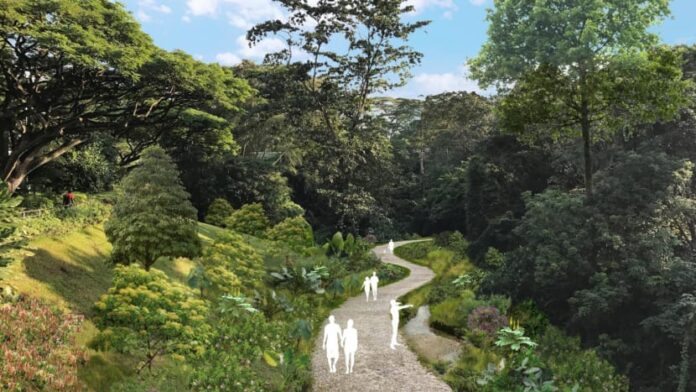SINGAPORE: National Development Minister Desmond Lee announced on Tuesday (April 12) that a network of new Labrador Nature Parks with more than 200 hectares of green space will be established, adding 30 kilometres to Singapore’s nature trails and park links .
He pointed out that this is almost 1.5 times the size of the Bukit Timah Nature Reserve.
Mr Lee said the new network of natural parks will include core habitats such as the Labrador Nature Reserve, mature secondary forests along the southern ridge, and surrounding green spaces such as Labrador Nature Park, Berlayer Creek and Pasir Panjang Park.
He added that the green space reserved on the Keppel Club website will also be part of the network.
On Tuesday, Mr Lee announced that about 6,000 Housing and Development Board (HDB) units would be built there, with the first build-to-order project expected to launch within three years.
Mr Lee said the ministry’s ecological analysis work showed the Keppel Club site was an “important ecological link” between mature secondary forests along the South Ridge and the Labrador Nature Reserve.
He added that within the Keppel Club grounds, about 10 hectares of green space will be set aside for parks and open spaces, accounting for 20 per cent of the area, or 18 football pitches.
“These green spaces will form four green fingers throughout the estate, serving both as habitat, as a link between flora and fauna and the surrounding natural areas, and as a recreational space for residents.”
The ecological analysis work also revealed “significant ecological links” between the South Ridge and Labrador Nature Reserve, through parts of Alexandra through the Keppel Club, and forested areas at Berlayer Creek, Mr Lee said .
He added that these corridors will be enhanced through the network, introducing several new green spaces of over 25 hectares.
These include a new nature park along Alexandra Creek, a new extension to Pasir Panjang Park, a new nature park at Berlayer Creek, and a new park at Kings Wharf above the reserved space on the Keppel Club grounds , said Mr. Lee.
“We will also restore and enhance existing habitats in the Labrador Nature Reserve, including coastal hills and coastal beach forests,” he added.
Mr Lee said the new nature park network will add nearly 30km of new nature trails, park connectors and nature pathways.
“This will provide a total of 40km of such space for Singaporeans to explore in the region,” he added.
He added that the MND commissioned an environmental impact study covering some 77.8 hectares to ensure the development plan was “sensitive to the surrounding terrestrial and coastal environment”.
The study found the site contained more than 390 plant species and 380 animal species, most of which were located in three areas of high conservation value, the HDB said in a separate fact sheet.
This includes primary secondary forests at Bukit Chermin and mangroves adjacent to Berlayer Creek, one of two mangrove habitats in the southern part of mainland Singapore.
Primary secondary forests are forests that have regrown on sites cleared before the 1950s and are dominated by native tree species.
HDB said the third area consists of seagrass meadows and rocky coastal habitats that naturally form in marine coastal areas and are used by many species of flora and fauna.
It said in the fact sheet that “additional mitigation measures” would be implemented to minimise potential impacts to flora and fauna in the surrounding area.
“We will also stage clearing activities to avoid bird breeding season and allow wildlife grazing before site clearing. A tree sanctuary will also be established to protect large trees,” HDB said.
It added that it will develop an environmental monitoring and management plan to ensure the effectiveness of mitigation measures, and closely monitor and manage any potential impact of infrastructure and construction works on the environment.
Mr Lee added: “When we need land for our development needs, we try to utilise brownfields first as much as possible.
“Even doing this, we remained sensitive to the surrounding natural areas and realised that if we needed to develop green spaces, we could minimise our impact on the environment. We used a science-based approach to identify and enhance ecological connectivity across the city. “
He added that the development of the Keppel Club grounds and wider network of natural parks exemplifies this approach.
“Working with our communities to integrate nature into our urban fabric. Transforming Singapore into a natural city where our people and our biodiversity can thrive together.”






